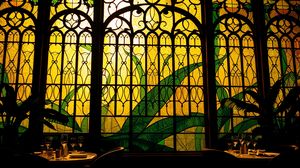
Seven Dials Monument is a notable landmark located at the heart of the vibrant Seven Dials area in London. This intriguing structure comprises six sundials atop a column, which might seem misleading given the name, but it is said to represent the intersection of seven streets converging at the point where the monument stands. First erected in the 17th century, it was designed by Thomas Neale as part of his vision to create a fashionable residential area.
The monument serves as a focal point around which the Seven Dials district revolves. Its presence is a testament to the ambitious urban planning of its era. Though the original structure was removed in the 19th century, it was restored in 1989, maintaining the historical intrigue and aesthetic that characterizes the area.
A quirky fact about the Seven Dials is that Charles Dickens, one of London's most famous literary figures, mentioned the area in his work. He described Seven Dials with its connotations of poverty and characterful backstreets, which contributed to the overall tapestry of Victorian London life.
Interestingly, each of the sundials on the monument aligns with the direction of the seven converging streets. Despite this clever alignment, only six faces are present on the obelisk, creating a curious mathematical puzzle that has intrigued locals and visitors alike for centuries.
The restoration in the late 20th century was a pivotal moment in reviving the cultural and historical significance of Seven Dials. This rebirth transformed the area into a chic urban quarter, bustling with shops, theatres, and a range of eateries, all under the auspices of this distinctive monument.

Making the Most of Your Visit:
When you're at the Seven Dials Monument, take a moment to stand directly at the monument's base and look down each of the seven streets. It's a unique perspective that really gives you a feel for the clever urban design that Thomas Neale envisioned. It's like being at the center of a starburst!
The sundials atop the monument can be a bit hard to see in detail from the ground. If you're interested in a closer look, bring a small pair of binoculars or a camera with a zoom lens to check out the intricate designs.
Pay particular attention to the playful puzzle of the sundials—remember, there are six on the column, matching the number of faces on the obelisk, but they represent seven streets. It's a lovely example of London's fondness for quirks and hidden riddles.
Make sure you visit during the day when there is sunlight, as this is when the sundials are truly in action. Watching the shadows and how they align can be a delightful experience, especially for those fascinated by historical timekeeping.
Finally, keep an eye out for local events. The Seven Dials area occasionally hosts small markets and street performances around the monument. These can provide a fantastic glimpse into the local culture and add a spontaneous twist to your visit.

Visiting Times & Costs:
The Seven Dials Monument is open to the public 24 hours a day, seven days a week, as it is located in a publicly accessible area. Since it is an outdoor landmark, there is no entrance fee or ticket required to visit the monument itself.
There are no specific accessibility issues related to viewing the Seven Dials Monument, as it is located in a public space. However, some of the surrounding streets can be busy with traffic, so caution is advised for people with mobility challenges.
Always check local resources for any temporary closures or events that might restrict access during your visit.

Address & Map:

Nearby:























